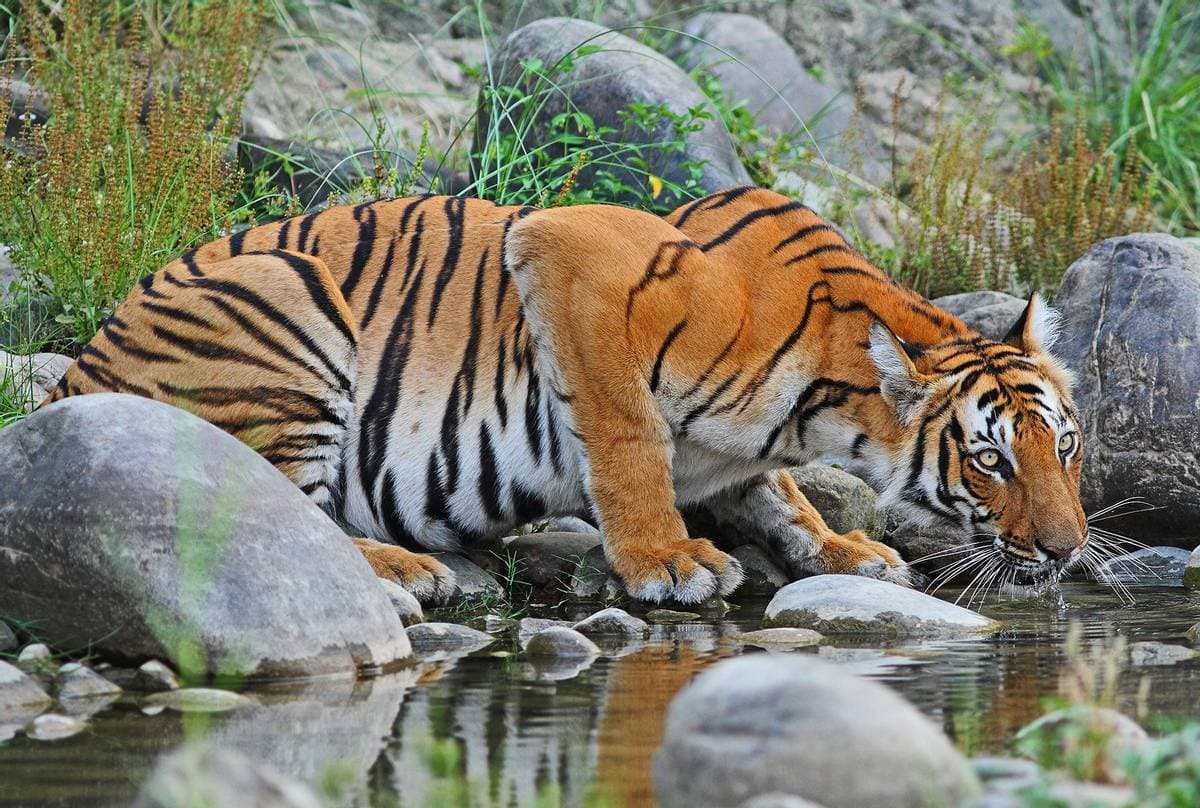Protected Areas: Conservation Area, Wildlife reservation and Hunting Zone in Nepal
Nepal's stunning landscape hosts an incredible network of protected areas that safeguard some of the world's most endangered wildlife and pristine ecosystems. At Luxury Holiday Nepal, we've spent years exploring these remarkable conservation zones, and we're excited to share our insider knowledge with wildlife enthusiasts, adventure travelers, and conservation-minded visitors who want to experience Nepal's natural heritage responsibly.
Our protected area system includes 12 national parks, 1 wildlife reserve, 6 conservation areas, and 13 buffer zones, plus 1 hunting reserve - each playing a crucial role in preserving biodiversity while supporting local communities. We'll guide you through Nepal's Conservation Areas, Wildlife reservations and Hunting Zones to help you understand how these different protection models work together.
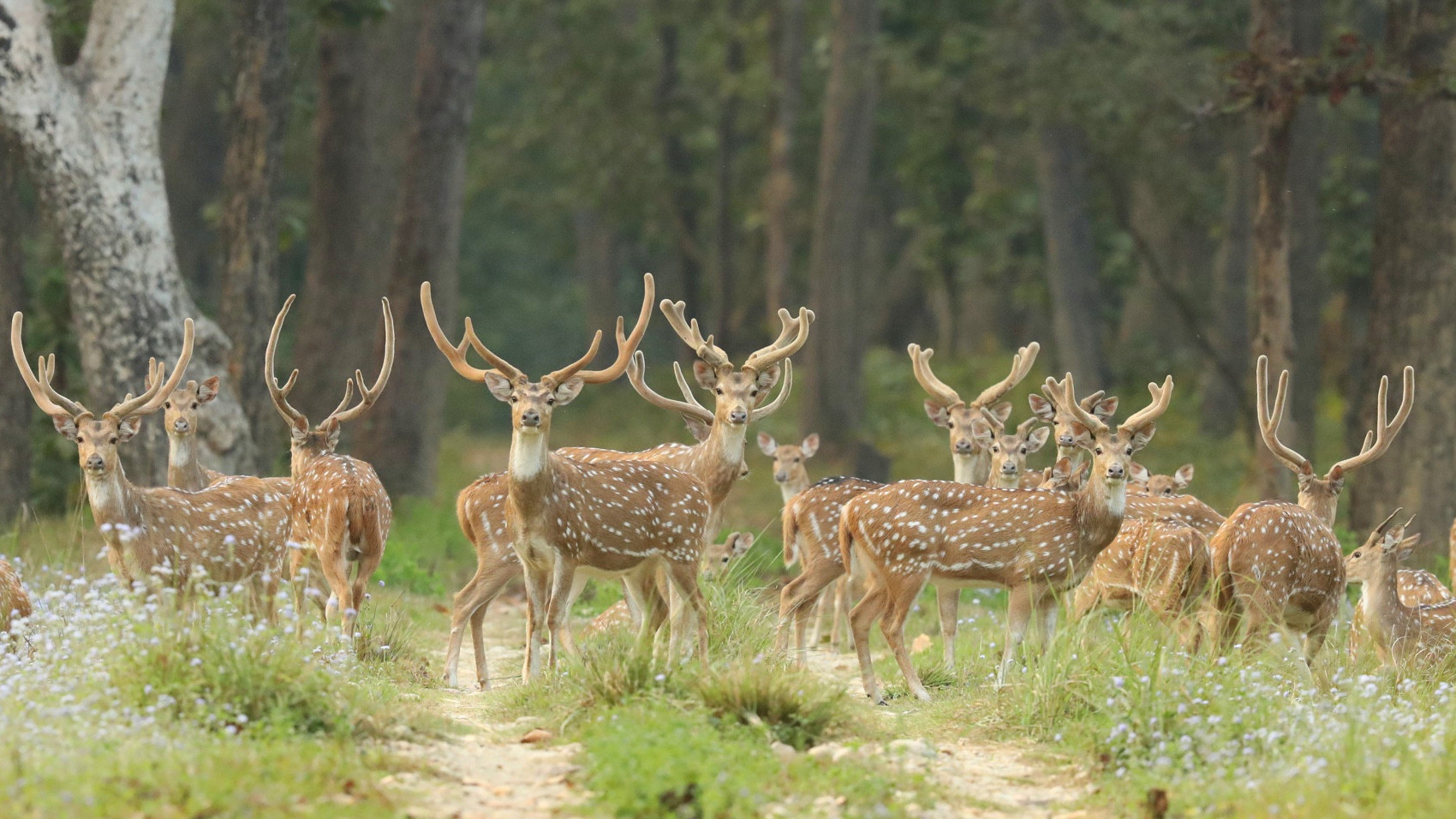
In this comprehensive guide, we'll explore the unique characteristics of conservation areas like Annapurna and Manaslu, where community-based management has revolutionized wildlife protection. We'll also dive into our world-famous national parks and wildlife reserves, including Chitwan and Bardia, where you can spot tigers, rhinos, and countless bird species. Finally, we'll examine Nepal's controlled hunting zones and how regulated wildlife management contributes to conservation funding while maintaining ecological balance.
Join us as we uncover the stories behind Nepal's most spectacular protected areas and show you how to experience them through our carefully crafted luxury adventures.
Understanding Nepal's Protected Area System
Classification of protected areas and their purposes
We've witnessed Nepal develop one of the most comprehensive protected area systems in South Asia, covering approximately 34% of the country's total land area. The system includes four main categories: National Parks, Wildlife Reserves, Conservation Areas, and Hunting Reserves. Each serves distinct conservation purposes tailored to specific ecosystems and species requirements.
National Parks represent our strictest protection category, where human activities are severely restricted to preserve pristine wilderness and critical wildlife habitats. We see these areas serving as genetic reservoirs for endangered species like tigers, rhinos, and snow leopards. Wildlife Reserves function as specialized protected zones designed for specific species conservation, often allowing limited sustainable use by local communities.
Conservation Areas operate under our unique community-based model, where local populations actively participate in conservation while maintaining traditional lifestyles. We've found this approach particularly effective in the Himalayas, where indigenous communities have centuries of sustainable resource management experience. Hunting Reserves, though controversial, serve as controlled zones where limited trophy hunting generates conservation funding while maintaining healthy wildlife populations.
|
Protected Area Type |
Primary Purpose |
Community Involvement |
Area Coverage |
|
National Parks |
Strict Conservation |
Minimal |
20 areas |
|
Wildlife Reserves |
Species Protection |
Limited |
6 areas |
|
Conservation Areas |
Community-based Conservation |
High |
13 areas |
|
Hunting Reserves |
Controlled Management |
Moderate |
1 area |
Government policies and legal framework
Our protected area system operates under robust legal frameworks established through decades of policy evolution. The National Parks and Wildlife Conservation Act of 1973 laid our foundation, followed by significant amendments in 1982 and 1993 that strengthened conservation measures and community participation provisions.
We operate under a hierarchical governance structure where the Ministry of Forests and Environment provides policy direction, while implementation occurs through various specialized agencies. The Buffer Zone Management Regulations of 1996 represent our pioneering approach to community-based conservation, allowing local communities to benefit from conservation activities through revenue sharing and sustainable resource use.
Recent policy developments emphasize climate change adaptation and ecosystem services. We've integrated protected area management with national climate strategies, recognizing these areas as crucial carbon sinks and biodiversity refuges. The Protected Area Management Regulations of 2017 streamlined management procedures while strengthening penalties for wildlife crimes.
Our legal framework also addresses international commitments under various conventions including CITES, CBD, and Ramsar. We've developed specific protocols for transboundary conservation, particularly important given our shared ecosystems with India and China.
Role of Department of National Parks and Wildlife Conservation
We work closely with the Department of National Parks and Wildlife Conservation (DNPWC), established in 1980 as our primary institution responsible for protected area management. The department operates under the Ministry of Forests and Environment and coordinates all conservation activities across the country's protected areas.
DNPWC manages our day-to-day operations through a network of park wardens, conservation officers, and field staff stationed across all protected areas. We've seen the department evolve from a primarily enforcement-focused agency to one emphasizing community engagement and scientific management. Their responsibilities include wildlife monitoring, habitat management, anti-poaching operations, and tourism regulation.
The department collaborates extensively with international organizations, research institutions, and NGOs to implement conservation programs. We've observed their successful partnerships with WWF, USAID, and various other organizations in species recovery programs, particularly for tigers and rhinos. They also coordinate with the Nepal Army for security operations in sensitive border areas.
Training and capacity building represent core DNPWC functions. We've participated in their various programs that enhance local community skills in ecotourism, wildlife monitoring, and sustainable resource management. The department also maintains our national wildlife database and conducts regular population surveys of key species.
International recognition and UNESCO World Heritage sites
Nepal's conservation efforts have earned significant international recognition, with several protected areas receiving UNESCO World Heritage status. We take pride in our four World Heritage sites, two of which are natural heritage areas directly related to our protected area system.
Sagarmatha National Park gained World Heritage status in 1979, recognizing our efforts to protect the world's highest mountain ecosystem and its unique biodiversity. We've maintained this designation through careful management of tourism impacts while preserving the area's natural and cultural values. Chitwan National Park achieved World Heritage recognition in 1984, acknowledging our success in protecting one of Asia's finest examples of intact Terai lowland ecosystem.
Our mixed World Heritage sites - Lumbini and Kathmandu Valley - demonstrate how cultural and natural heritage interweave in our conservation approach. We've learned that protecting cultural sites often requires maintaining surrounding natural environments, creating buffer zones that serve dual conservation purposes.
Beyond UNESCO recognition, several of our protected areas receive international designation under various conventions. We manage multiple Ramsar wetland sites, recognizing their importance for migratory birds and global water cycles. Our transboundary initiatives, particularly with India's protected areas, have earned recognition from various international conservation organizations.
We've also achieved significant recognition through our community-based conservation model, which has been replicated in other developing countries. International visitors and researchers frequently study our conservation areas as examples of successful community participation in biodiversity protection.
Conservation Areas: Community-Based Protection Models

Annapurna Conservation Area - Trekking Paradise with Local Management
We've witnessed firsthand how the Annapurna Conservation Area (ACA) stands as Nepal's largest protected area, spanning over 7,629 square kilometers of diverse landscapes from subtropical valleys to towering peaks above 8,000 meters. What makes us particularly proud of this region is its pioneering community-based conservation model that puts local communities at the heart of protection efforts.
Our experience organizing treks through the ACA has shown us how the National Trust for Nature Conservation works hand-in-hand with local communities to manage this extraordinary ecosystem. We've seen how villages like Ghandruk and Landruk have transformed from simple farming communities into well-organized conservation stewards who balance tourism development with environmental protection.
The area encompasses the famous Annapurna Circuit and Annapurna Base Camp treks, routes we've guided countless adventurers through. We've watched trekkers marvel at the incredible biodiversity - from rhododendron forests bursting with color during spring to high-altitude landscapes where snow leopards and blue sheep roam.
What sets the ACA apart in our work is how local people directly benefit from conservation efforts. We've partnered with community lodges where families earn income while maintaining traditional architecture and sustainable practices. The area protects over 1,200 plant species and 100+ mammal species, creating a living laboratory where conservation meets culture.
Our guests consistently tell us how the community-managed approach creates more authentic experiences compared to government-run parks. Local guides share traditional knowledge about medicinal plants and wildlife behavior that adds depth to every trek we organize through this remarkable conservation success story.
Manaslu Conservation Area - Restricted Area Permits and Cultural Preservation
We've found the Manaslu Conservation Area (MCA) to be one of Nepal's most fascinating protected regions, where we navigate complex permit requirements to offer our guests access to pristine wilderness and authentic Tibetan Buddhist culture. Covering 1,663 square kilometers around the world's eighth-highest peak, this area requires special restricted area permits that we handle expertly for our clients.
Our years of experience organizing Manaslu Circuit treks have taught us how this conservation area perfectly balances wildlife protection with cultural preservation. We've guided visitors through ancient monasteries where monks continue centuries-old traditions while serving as informal guardians of the surrounding forests and wildlife.
The permit system, though complex, serves a crucial purpose we fully support - limiting visitor numbers to protect both the fragile ecosystem and local culture. We secure the necessary permits including the Manaslu Restricted Area Permit, Manaslu Conservation Area Permit, and Annapurna Conservation Area Permit for our guests, ensuring smooth access to this extraordinary region.
We've documented incredible wildlife diversity during our expeditions, from Himalayan tahr and blue sheep to the elusive snow leopard. The area's forests shelter over 2,000 plant species and provide habitat for 33 mammal species and 110 bird species. Our local guides, many from Tibetan refugee communities, share knowledge about traditional conservation practices passed down through generations.
What excites us most about the MCA is how it demonstrates that restricted access can enhance rather than limit meaningful travel experiences. Our small-group expeditions allow genuine cultural exchanges in villages where prayer flags flutter above terraced fields, creating memories that last lifetimes.
Api Nampa Conservation Area - Remote Wilderness and Biodiversity Hotspots
We consider the Api Nampa Conservation Area our hidden gem, representing Nepal's most remote protected wilderness where we lead truly adventurous spirits into landscapes few travelers ever witness. Established in 2010 and covering 1,903 square kilometers in far-western Nepal, this area borders India and showcases biodiversity that amazes even our most experienced guides.
Our expeditions to this region require careful planning and preparation, as we're entering territory where infrastructure remains minimal and weather conditions can change rapidly. We've developed relationships with local communities who serve as our eyes and ears for wildlife sightings and safe passage through challenging terrain.
The conservation area protects the watersheds of two sacred mountains - Api (7,132m) and Nampa (6,757m) - peaks that hold deep spiritual significance for local communities. We've organized climbing expeditions and exploratory treks that reveal landscapes ranging from subtropical forests at 1,200 meters to alpine meadows and glacial zones above 5,000 meters.
What continually surprises us about Api Nampa is its incredible biodiversity concentration. We've encountered species found nowhere else in Nepal, including several endemic plants and rare wildlife like the Himalayan black bear and various pheasant species. The area serves as a critical corridor connecting protected areas in Nepal with those in India, supporting wildlife migration patterns we've studied during our expeditions.
Our guests who venture into Api Nampa often describe it as Nepal's last frontier, where traditional village life continues unchanged and wildlife roams freely across vast wilderness areas. We take pride in offering access to this extraordinary region while ensuring our presence supports local conservation efforts and community development initiatives.
National Parks: Nepal's Crown Jewels for Wildlife Protection
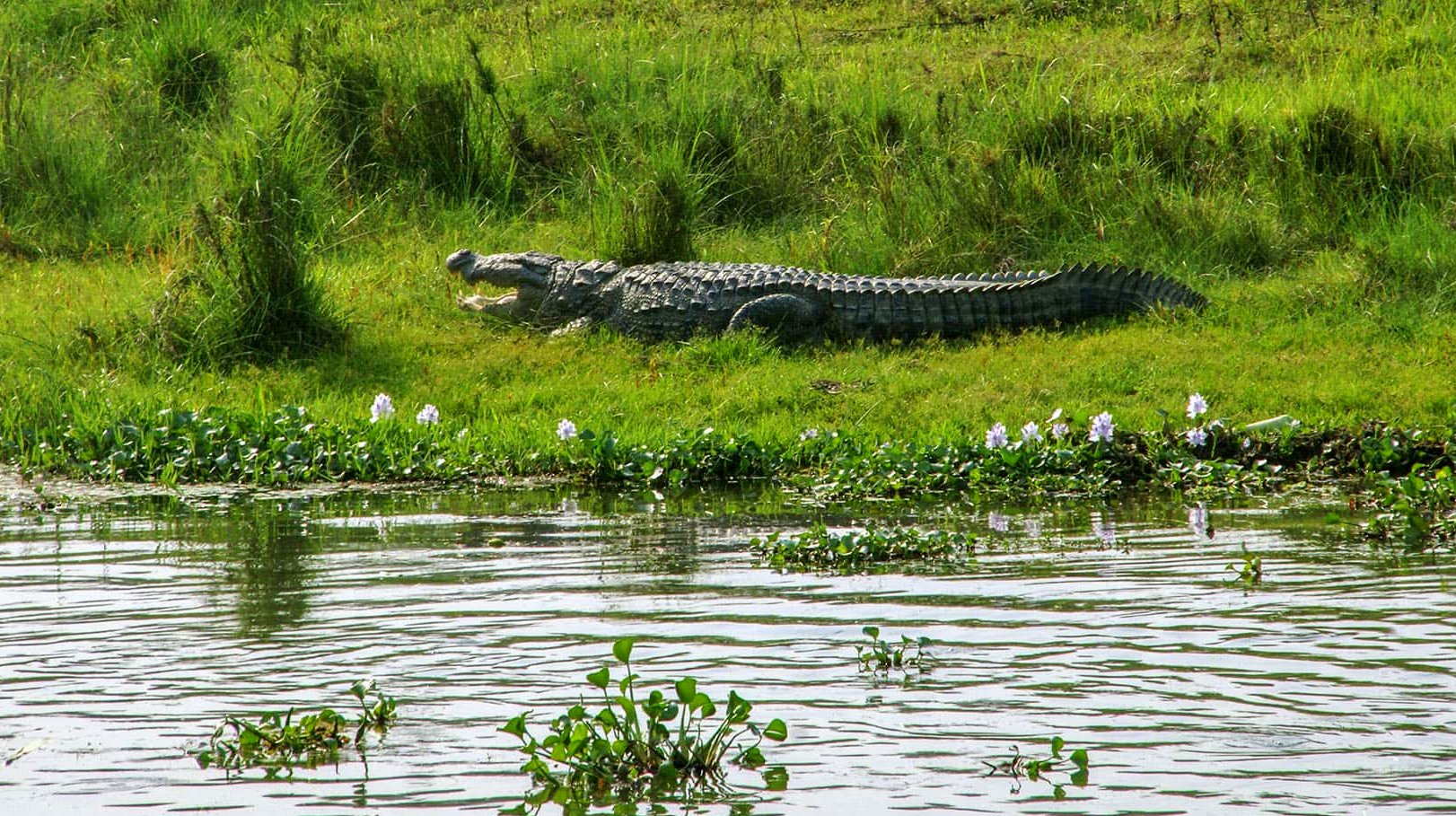
Chitwan National Park - rhino sanctuary and jungle safari experiences
We've witnessed something truly magical at Chitwan National Park – watching a one-horned rhinoceros emerge from the tall grass feels like stepping back in time. This UNESCO World Heritage site spans 932 square kilometers of pristine lowland and has become our go-to destination for clients seeking authentic wildlife encounters. We've organized countless jungle safaris here, and each one reveals something new about this incredible ecosystem.
The park's success story with rhino conservation amazes us every time we visit. From just 100 individuals in the 1960s, we now see over 600 rhinos thriving in their natural habitat. Our guided tours take visitors through grasslands, riverine forests, and sal forests where we regularly spot these magnificent creatures alongside leopards, sloth bears, and over 500 bird species.
We particularly love the elephant-back safaris at dawn – there's nothing quite like watching the mist rise over the Rapti River while elephants quietly navigate through the jungle. Our luxury accommodations nearby ensure guests can maximize their wildlife viewing opportunities during the golden hours when animals are most active.
Sagarmatha National Park - Everest region ecosystem preservation
We're constantly amazed by how Sagarmatha National Park protects not just the world's highest peak, but an entire high-altitude ecosystem that exists nowhere else. Covering 1,148 square kilometers, this park safeguards the homeland of the legendary Sherpa people and countless species adapted to extreme altitudes.
Our trekking expeditions through this region reveal layers of biodiversity that most people never expect. We guide visitors through rhododendron forests that bloom spectacularly in spring, past alpine meadows where blue sheep graze, and into zones where snow leopards still roam. The park protects over 118 species of birds, including the colorful Himalayan monal – Nepal's national bird.
What strikes us most about our work here is how conservation and culture intertwine. The Sherpa communities we partner with have been guardians of this landscape for generations. We've developed relationships with local conservation groups who monitor wildlife populations and maintain traditional practices that actually benefit the ecosystem.
The park faces unique challenges from climate change and increasing tourism pressure. We've seen glacial lakes forming and shifting vegetation patterns during our annual visits. This drives our commitment to responsible tourism practices that support both conservation efforts and local communities.
Bardia National Park - tiger corridor and pristine wilderness
We consider Bardia National Park Nepal's best-kept secret for tiger viewing. This 968-square-kilometer wilderness in the western Terai represents what we believe is the most pristine tiger habitat remaining in Nepal. Our wildlife photography expeditions here consistently deliver sightings that leave even experienced naturalists speechless.
The park forms part of a critical tiger corridor connecting populations across the Nepal-India border. We've tracked tiger movements with local researchers and can confidently say this area supports one of the healthiest breeding populations in the region. Our night drives reveal a completely different world – we've spotted fishing cats, jungle cats, and the elusive leopard cat alongside the park's famous Royal Bengal tigers.
We're particularly proud of our partnerships with local Tharu communities who serve as our guides and boat operators along the Karnali River. Their traditional knowledge helps us locate wildlife that even trained biologists might miss. The park's elephant population – some of the last wild herds in Nepal – creates incredible photographic opportunities during our multi-day safaris.
Bardia's remote location means fewer crowds but requires more planning. We arrange specialized accommodations and coordinate with park authorities to ensure our clients experience this wilderness at its finest while supporting crucial conservation funding.
Langtang National Park - high-altitude biodiversity and red panda habitat
We've spent countless hours in Langtang National Park's bamboo forests hoping to glimpse the elusive red panda, and those rare sightings remain among our most treasured guiding moments. This 1,710-square-kilometer park protects critical Himalayan ecosystems ranging from subtropical forests to alpine meadows above 7,000 meters.
Our research collaborations here focus on the park's role as a biodiversity hotspot. We guide scientific expeditions that have documented over 300 bird species, including several endemic to the Himalayas. The park's varied altitude zones create distinct habitats – we might start a day observing langur monkeys in oak forests and end it watching Himalayan tahr navigate rocky cliffs.
The red pandas steal our hearts every time. These endangered mammals depend on the park's bamboo undergrowth, and we work with conservation groups monitoring their population through camera traps. Our eco-lodges in the buffer zones provide crucial income for local communities who've become the species' most dedicated protectors.
Following the 2015 earthquake, we've been part of rebuilding efforts that prioritize both human communities and wildlife habitat. Our sustainable tourism model here demonstrates how responsible travel can directly fund conservation while providing authentic cultural experiences with Tamang communities whose traditions remain deeply connected to forest preservation.
Here are some of the best National Park packages :-
Wildlife Reserves: Specialized Habitats for Endangered Species
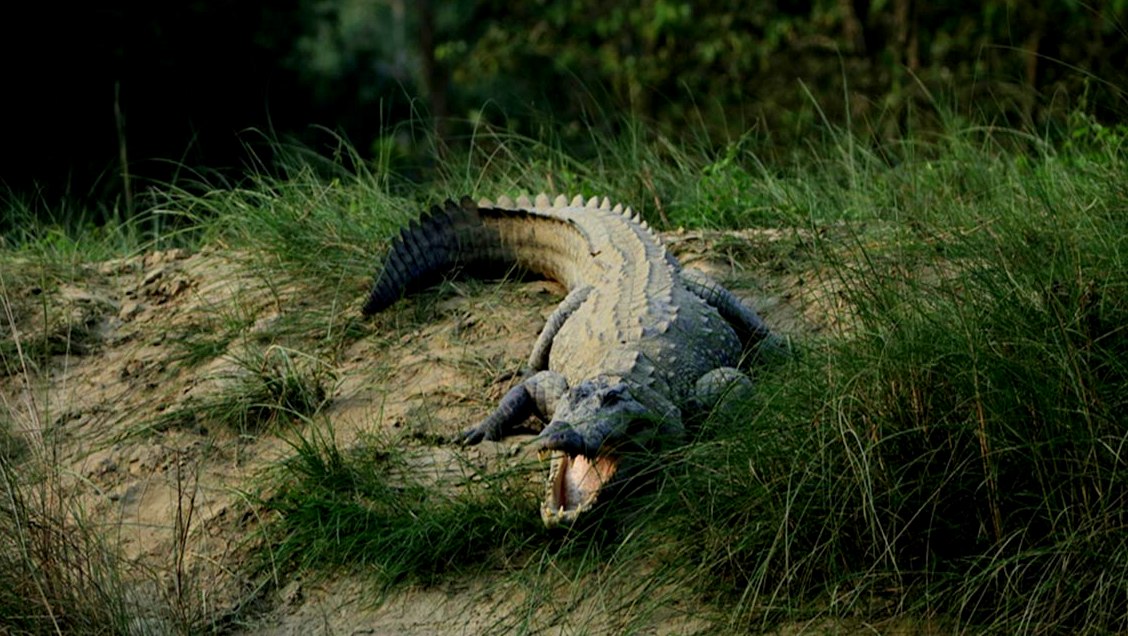
Koshi Tappu Wildlife Reserve - wetland bird sanctuary and water buffalo conservation
We find ourselves at Nepal's premier wetland sanctuary, where the mighty Koshi River creates a unique ecosystem that serves as a critical stopover for migratory birds along the Central Asian Flyway. Spanning 175 square kilometers in the eastern Terai, Koshi Tappu Wildlife Reserve represents our commitment to preserving Nepal's aquatic biodiversity.
The reserve hosts over 485 bird species, making it a paradise for bird watchers and researchers alike. During winter months, we witness spectacular migrations as thousands of waterfowl, including endangered species like the Bengal Florican and Swamp Francolin, arrive to feed and rest. Our guided tours often reveal rare sightings of the White-rumped Vulture and Egyptian Vulture, both critically endangered species that rely on these wetlands for survival.
Beyond its avian treasures, Koshi Tappu serves as the last stronghold for wild water buffalo in Nepal. We've worked closely with local communities to protect these magnificent animals, which once roamed freely across the subcontinent. The reserve now maintains a healthy population of around 200 individuals, representing a conservation success story that we're proud to share with visitors.
Our conservation efforts extend to protecting the delicate balance between human activities and wildlife needs. We've established buffer zones where local communities engage in sustainable fishing and agriculture, creating a model where conservation and livelihoods coexist harmoniously.
Parsa Wildlife Reserve - tiger habitat and corridor connectivity
We recognize Parsa Wildlife Reserve as a cornerstone in our tiger conservation strategy, serving as a vital corridor connecting Nepal's protected areas with India's Valmiki Tiger Reserve. This 637-square-kilometer reserve in the central Terai plays a crucial role in maintaining genetic diversity among tiger populations across the region.
Our wildlife monitoring teams regularly document tiger movements through this corridor, tracking individuals as they traverse between different territories. The reserve currently supports an estimated 15-20 tigers, a number that continues to grow thanks to our anti-poaching efforts and habitat restoration programs. We've installed camera traps throughout the reserve, providing valuable data on tiger behavior and population dynamics.
The diverse landscape of Parsa includes tropical and subtropical forests, grasslands, and riverine areas that support a rich variety of wildlife. We've recorded over 50 mammal species, including leopards, sloth bears, wild elephants, and various deer species that form the prey base for large carnivores. Our research indicates that the reserve's ecosystem health directly impacts tiger breeding success and territorial establishment.
Working with border authorities and our Indian counterparts, we've developed joint patrol systems that ensure seamless wildlife movement across international boundaries. This collaborative approach has significantly reduced human-wildlife conflict while maintaining the ecological integrity of the trans-boundary landscape.
Shuklaphanta Wildlife Reserve - swamp deer protection and grassland ecosystems
We've dedicated extensive resources to protecting Shuklaphanta Wildlife Reserve's unique grassland ecosystem, which supports the largest population of swamp deer in Nepal. Located in the far-western Terai, this 305-square-kilometer reserve showcases our commitment to preserving species that depend on specific habitat conditions.
The reserve's vast grasslands, locally known as phantas, create an almost African savanna-like landscape that's rare in Nepal. We maintain these grasslands through controlled burning and invasive species management, ensuring optimal habitat for swamp deer, which require open areas for feeding and predator detection. Our current population estimates indicate over 2,000 swamp deer, making this one of the most successful conservation programs in South Asia.
Our wildlife teams have documented remarkable biodiversity within the reserve's boundaries. We regularly observe Bengal tigers, leopards, and fishing cats prowling through the grasslands, while our bird surveys have identified over 450 species, including the endangered Great Hornbill and various species of eagles and vultures.
The reserve's elephant population, numbering around 25-30 individuals, represents another conservation priority. We've established elephant corridors and implemented early warning systems to minimize human-elephant conflict in surrounding communities. Our community outreach programs have successfully engaged local villages in conservation activities, creating a network of wildlife guardians who actively participate in protection efforts.
|
Reserve |
Key Species |
Area (sq km) |
Primary Ecosystem |
|
Koshi Tappu |
Water Buffalo, 485+ Bird Species |
175 |
Wetlands |
|
Parsa |
Tigers, Leopards, Elephants |
637 |
Forest Corridor |
|
Shuklaphanta |
Swamp Deer, Tigers |
305 |
Grasslands |
Hunting Reserves: Controlled Wildlife Management Zones
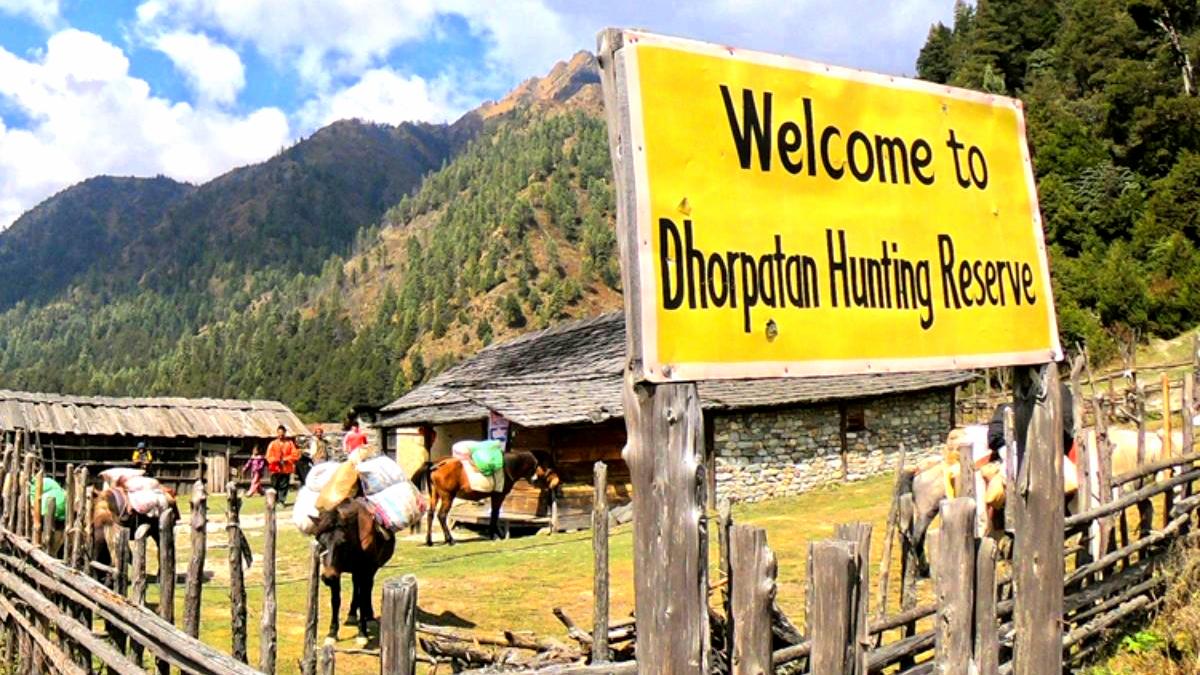
Dhorpatan Hunting Reserve - blue sheep and pheasant hunting opportunities
We're proud to guide you through Nepal's only hunting reserve, the Dhorpatan Hunting Reserve, nestled in the mid-western hills across Rukum, Myagdi, and Baglung districts. This unique 1,325-square-kilometer sanctuary operates under strict government regulations, offering controlled hunting experiences for blue sheep (bharal) and various pheasant species, including the colorful Himalayan monal.
Our hunting reserve tour focus on the reserve's primary quarry - the magnificent blue sheep that roam the alpine slopes between 3,000 to 5,500 meters. These sure-footed animals present an exciting challenge for experienced hunters, requiring both skill and patience. We also arrange hunts for several pheasant species, including the kalij pheasant and cheer pheasant, which inhabit the lower elevation forests.
The hunting seasons we coordinate are carefully planned around wildlife breeding cycles. Blue sheep hunting typically occurs during autumn months (October to December), while pheasant hunting seasons vary by species. We work closely with reserve authorities to secure proper permits and ensure all activities comply with international hunting standards.
Our hunting packages include professional guides, local sherpas, camping equipment, and all necessary permits. We maintain strong partnerships with local communities who serve as trackers and guides, bringing invaluable knowledge of animal behavior and terrain navigation to every trip over there.
Sustainable hunting practices and revenue generation
We believe hunting can serve conservation when done right. Our approach emphasizes sustainable practices that support both wildlife populations and local communities. Every hunting permit we arrange comes with strict quotas established through scientific wildlife surveys conducted by government biologists.
The revenue structure we help navigate benefits conservation directly. Hunting fees range from $1,500 to $7,000 depending on the species and duration, with 50% going to the Department of National Parks and Wildlife Conservation for reserve management. We ensure our clients understand that their participation contributes to anti-poaching efforts, habitat restoration, and wildlife research programs.
Our hunting guides follow strict ethical guidelines we've developed over years of operation. We promote fair chase principles, meaning animals are hunted in their natural habitat without unfair advantages. Trophy hunting is limited to mature males past their reproductive prime, ensuring minimal impact on breeding populations.
We work with international hunting organizations to maintain certification standards and participate in wildlife monitoring programs. Our hunters contribute biological samples and data that help researchers track population health and genetic diversity. This scientific collaboration makes every hunt a contribution to conservation knowledge.
Local community benefits and conservation funding
We've seen firsthand how hunting revenue transforms local communities around Dhorpatan. Village development committees receive direct payments from hunting fees, funding schools, health posts, and infrastructure projects that improve daily life for thousands of residents.
Our partnerships with local communities create employment opportunities that didn't exist before. We hire village residents as guides, porters, cooks, and camp assistants, providing steady income during hunting seasons. Many families have started homestay businesses catering to our hunting clients, creating year-round economic opportunities.
The conservation funding model we support through hunting activities has proven remarkably effective. Communities that once viewed wildlife as competition for resources now see them as valuable assets worth protecting. We've witnessed villages voluntarily creating buffer zones around critical habitats and organizing community patrols to prevent poaching.
Local conservation committees we work with use hunting revenues to fund anti-poaching operations, habitat restoration, and human-wildlife conflict mitigation. These grassroots efforts often prove more effective than top-down conservation approaches because they enjoy genuine community support and ownership.
We maintain transparent accounting of how hunting fees are distributed, ensuring communities see direct benefits from conservation efforts. This approach has reduced livestock predation conflicts and created strong local advocates for wildlife protection throughout the Dhorpatan region.
Planning Your Protected Area Adventure with Luxury Holiday Nepal
Best Seasons for Wildlife Viewing and Trekking
We know timing can make or break your Nepal adventure. Our experience guiding thousands of visitors through Nepal's protected areas has taught us that October to December offers the best wildlife viewing opportunities. During these months, clear skies provide stunning mountain backdrops while animals are most active after the monsoon season.
For trekking enthusiasts, we recommend March to May and October to November. Spring brings blooming rhododendrons and active bird migration, while autumn offers crystal-clear mountain views and comfortable temperatures. We avoid recommending monsoon months (June-September) due to leeches, muddy trails, and limited wildlife visibility.
Winter months (December-February) work wonderfully for Terai region wildlife parks like Chitwan and Bardia, where we often spot one-horned rhinos and Bengal tigers during morning safaris. The dry season concentrates animals around water sources, making sightings more predictable.
Permit Requirements and Booking Procedures
We handle all permit complexities for our guests, but understanding the process helps you plan better. Conservation areas like Annapurna require ACAP permits (Rs. 3,000 for foreigners), while national parks charge varying entrance fees ranging from Rs. 1,500 to Rs. 2,000 per day.
Our booking system streamlines the entire process. We secure permits 2-3 weeks in advance, especially during peak seasons. For restricted areas like Manaslu or Upper Mustang, we obtain special permits costing $70-100 per week through authorized agencies.
We maintain partnerships with Nepal's Department of National Parks and Wildlife Conservation, allowing us to process group permits efficiently. Our team coordinates TIMS (Trekkers' Information Management System) cards, which cost Rs. 2,000 for independent trekkers and Rs. 1,000 for organized groups.
Luxury Accommodation Options Near Protected Areas
We've carefully selected premium accommodations that enhance your protected area experience without compromising comfort. Near Chitwan National Park, we partner with luxury jungle resorts offering private villas with panoramic river views and spa services.
Our Annapurna region accommodations include boutique mountain lodges with heated rooms, gourmet meals, and spectacular Himalayan vistas. We've negotiated exclusive rates at properties like Ker & Downey's luxury camps and heritage hotels in Bandipur.
For Everest region adventures, we provide comfortable lodge upgrades in Namche Bazaar and Tengboche, featuring private bathrooms, reliable WiFi, and oxygen backup systems. Our Langtang valley partnerships include eco-luxury lodges built with sustainable materials and solar power systems.
We also offer glamping experiences near Bardia National Park, combining wilderness immersion with luxury amenities like premium bedding, private bathrooms, and professional camp cuisine.
Expert Guide Services and Customized Itineraries
Our guide team includes licensed naturalists, former park rangers, and cultural experts who bring protected areas to life. We employ local guides from indigenous communities who possess generations of wildlife knowledge and speak multiple languages fluently.
Each guide carries wilderness first aid certifications and extensive training in flora, fauna, and cultural heritage. We assign specialist bird guides for avian enthusiasts, photography guides for wildlife photographers, and mountaineering guides for high-altitude trekking.
We create personalized itineraries based on your interests, fitness level, and time constraints. Whether you're seeking rare snow leopards in Dolpo, Bengal tigers in Bardia, or cultural immersion in Annapurna villages, we design experiences matching your preferences.
Our flexibility allows spontaneous itinerary adjustments based on weather conditions, wildlife movements, or your changing interests during the journey.
Photography and Wildlife Watching Equipment Recommendations
We provide comprehensive equipment guidance to maximize your wildlife photography success. Our recommended camera setup includes telephoto lenses (400-600mm) for distant wildlife shots and wide-angle lenses for landscape photography.
Essential accessories we suggest include extra batteries (cold weather drains power quickly), weatherproof camera covers, sturdy tripods for low-light conditions, and polarizing filters for mountain reflections. We recommend bringing portable charging solutions and backup memory cards.
For wildlife observation, we supply high-quality binoculars (8x42 or 10x42 magnification) and spotting scopes for our premium packages. We also provide field guides specific to Nepal's wildlife and bird species.
Our equipment rental service includes professional camera gear, allowing you to travel light while accessing premium photography equipment. We maintain partnerships with local camera shops for emergency repairs or additional equipment needs during your journey.
We've explored Nepal's remarkable protected area system that spans from community-managed conservation areas to world-renowned national parks and specialized wildlife reserves. These diverse protection models showcase Nepal's commitment to preserving its incredible biodiversity while supporting local communities through sustainable tourism. The country's approach to wildlife management, including carefully regulated hunting zones, demonstrates a balanced strategy that generates essential conservation funding while protecting endangered species.
Our journey through these protected landscapes reveals the tremendous opportunities Nepal offers for conscious travelers seeking authentic wildlife experiences. At Luxury Holiday Nepal, we're passionate about connecting you with these extraordinary destinations while supporting their conservation mission. Whether you're drawn to tracking rhinos in Chitwan, searching for snow leopards in the Himalayas, or exploring community-led conservation projects, we'll craft an adventure that creates lasting memories and meaningful impact. Let us help you discover Nepal's protected areas where luxury meets conservation, and every visit contributes to preserving these natural treasures for future generations.
If you need any further information, please contact us by email: [email protected], Phone: +977- 985 100 5129 (WhatsApp)
#Tags
Tripadvisor
5.0928 reviewsGoogle
4.8114 reviewsFacebook
4.1 recommend44 ReviewsTrustpilot
4.1 Great(5 reviews)- Trusted by50K plus traveller

